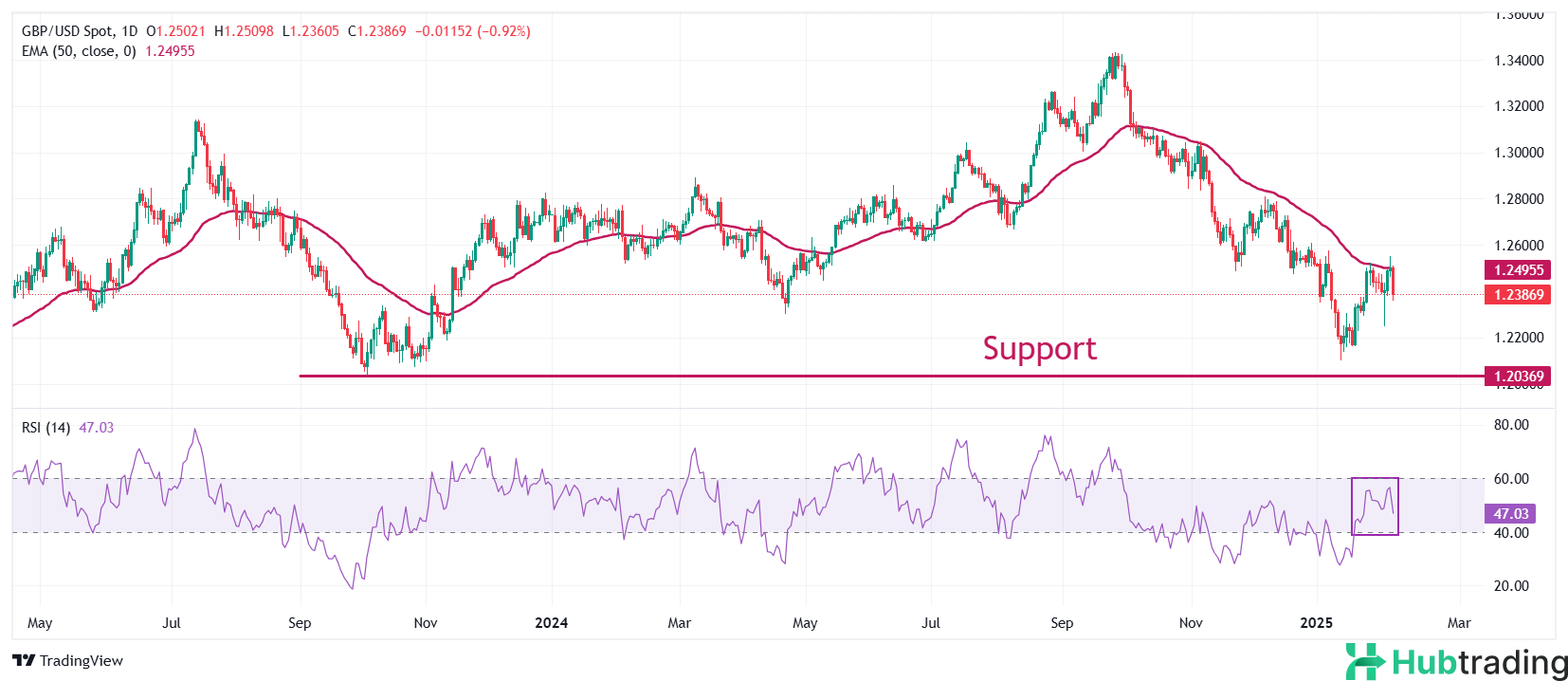- Pound Sterling came under pressure against its major peers as all nine BoE MPC members backed a 25-bps rate cut, lowering rates to 4.5%.
- Soft December CPI inflation data combined with weak labor demand over the three months ending in November have reinforced dovish sentiment at the BoE.
- Investors are now closely watching the upcoming US NFP data, which is expected to influence expectations for the Fed's monetary policy outlook.
The Pound Sterling (GBP) tumbled against its major peers during early North American trading on Thursday after the Bank of England (BoE) reduced its key interest rate by 25 basis points to 4.5%, marking the third rate cut in its current easing cycle that began at the August 2024 policy meeting.
While the market had expected a 25-bps reduction, the unanimous 9-0 vote - rather than the anticipated 8-1 split with dissent from hawkish policymaker Catherine Mann - has added further downside pressure to the currency.
Traders had already priced in the rate cut amid concerns over slowing economic growth and subdued labor demand, as UK employers have tempered hiring following Chancellor Rachel Reevese' announcement of higher National Insurance contributions. Recent employment data show that job growth has been decelerating, while the UK's GDP remained flat in the third quarter and during the October - November period.
Additionally, softer-than-expected inflation data - with services sector inflation easing to 4.4% in December from 5% in November - reinforced dovish expectations.
Daily Digest: Pound Sterling vs. US Dollar
- The GBP/USD pair slipped below 1.2400 as the British currency weakened on the back of the BoE's dovish decision and a solid recovery in the US Dollar (USD) ahead of Friday's US Nonfarm Payrolls (NFP) report for January.
- The US Dollar Index (DXY), which tracks the greenback against six major currencies, found support near 107.30 following a three-day sell-off and rebounded to around 108.00.
- Market attention is now focused on the upcoming US employment data, which is expected to shape expectations for how long the Federal Reserve (Fed) will hold its current interest rate range of 4.25%-4.50%. Fed Chair a recently stated that the central bank would only consider policy adjustments after observing "real progress in inflation or at least some weakness in the labor market."
- The CME FedWatch tool indicates that market participants are anticipating the next Fed rate cut to come at the June policy meeting.
- Earlier in the week, the USD had experienced a sharp sell-off as global trade war concerns eased, with trade tensions now seen as primarily between the US and China. In retaliation to President Donald Trump 's imposition of 10% tariffs, China has levied 15% tariffs on coal and liquefied natural gas (LNG), as well as 10% on crude oil, farm equipment, and some autos, while Trump temporarily suspended 25% tariff orders on Canada and Mexico for 30 days.
Technical Analysis: Pound Sterling Slips Below Key Support
Technically, the Pound Sterling has broken below the critical support level of 1.2400 against the USD. The GBP/USD pair had previously retreated toward the 50-day Exponential Moving Average (EMA) at around 1.2500 before resuming its downward movement.
The 14-day Relative Strength Index (RSI) remains confined within the 40.00 - 60.00 range, signaling a period of sideways momentum.
On the downside, key support zones are identified at the January 13 low of 1.2100 and the October 2023 low of 1.2050, while resistance is expected near the December 30 high of 1.2607.






